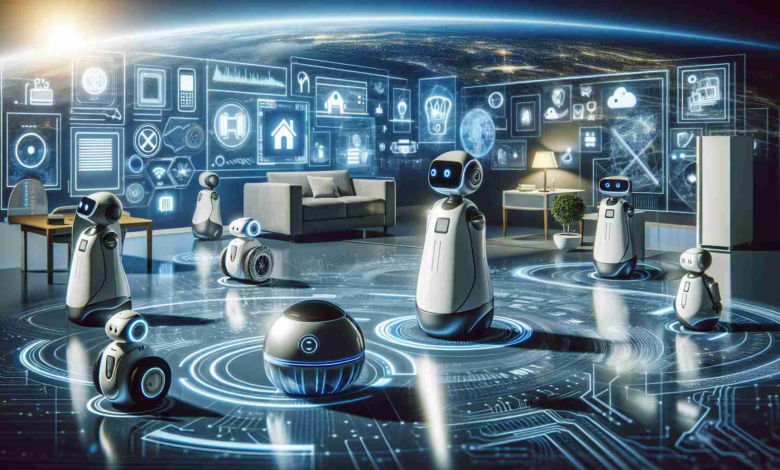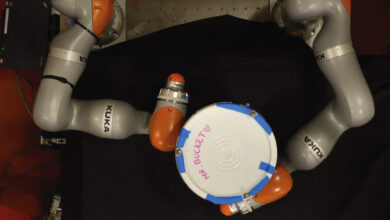Home Robots on the Horizon

In an intriguing turn of events, Apple Inc. is said to be recalibrating its innovation engine towards the domain of personal robotics, exploring the concept of domestic robots that could enrich the lives of users within their own homes. This move comes in the wake of the tech giant putting its car project on the back burner.
Summary: Apple is reportedly diverting resources to pioneer in the personal robotics industry. The tech titan’s engineers are believed to be developing two types of robots, one mobile and one table-top, both designed to enhance the digital interaction of users. With top executives showing interest in the tabletop robot with interactive capabilities, these innovations signal Apple’s quest for new growth avenues amidst the recent cancellation of its electric vehicle initiative and modest expectations from its Vision Pro mixed-reality headset.
According to industry whispers, there are a couple of fascinating robotics projects underway at Apple. One vision focuses on a mobile robot that might follow users around their residence potentially assisting with videoconferencing and possibly, though ambitiously, with chores. Another centers on a stationary device equipped with a robotic arm, capable of elevating video call experiences and selectively engaging with individuals in a group scenario.
These early-stage projects, still in the research phase, are indicative of Apple’s continuous push to revolutionize technology and integrate into everyday life. With a history of both breakthroughs and setbacks, like the discontinued automotive project and the tepidly-received mixed-reality headset, the company is no stranger to the dynamic nature of tech innovation.
Hurdles such as the complexity of engineering household robots and user affordability are significant, mirroring the earlier challenges faced with Project Titan. Yet, with such endeavors, Apple once again positions itself at the cusp of potentially shaping future home technology—though the fruition of such robotics stands as a testament to time and the company’s relentless pursuit of the next consumer tech infatuation.
In the realm of personal robotics, Apple Inc. appears to be making profound strides, suggesting a pivot in innovation focus as the company explores new technological territories. The industry itself is burgeoning, with market research forecasting significant growth. Analysts predict the global robotics market to expand at a compound annual growth rate (CAGR) of around 25-30% over the next decade, placing tech companies like Apple in a prime position to capture a sizable market share should they break through with practical, consumer-friendly products.
The personal robotics industry is not without its challenges, though. For one, the development of robots capable of operating within the dynamic and unstructured environments of personal homes requires sophisticated artificial intelligence, dexterous manipulation, and advanced sensing technology. Consumer acceptance is also a potential obstacle, as robots in the home evoke concerns over privacy and security. These issues, coupled with the high cost of advanced robotics technology, can become significant barriers to mass market penetration.
Another dimension to this endeavor is the competitive landscape. Players such as Boston Dynamics, SoftBank Robotics, and even Amazon with its recent rollout of the Astro home robot, already have footholds in this sector. Apple would be entering a market with established competition, though its history of disrupting industries with user-friendly and beautifully designed products gives it a potentially advantageous starting point.
On the flip side, Apple’s track record of creating entire ecosystems around its products could expedite its success in the personal robotics space. The integration of personal robots with existing Apple services and devices might emerge as a distinguishing factor in its quest for industry prominence. Moreover, its large and loyal customer base could provide a receptive audience for its robotics offerings.
To conclude, Apple’s decision to explore personal robotics is a reflection of both the company’s innovative ambition and the industry’s potential. With considerations ranging from technical feasibility to market reception, the success of such ventures remains uncertain. However, the long-term opportunities that personal robotics could present are immense, provided that companies like Apple can navigate the intricate web of engineering, ethical, and market challenges inherent in such sophisticated technology.
For more information on the latest trends and forecasts in the robotics sector, one might visit major technology and market research domains such as Bloomberg or Gartner for expert analysis and insights.

Igor Nowacki is a fictional author known for his imaginative insights into futuristic technology and speculative science. His writings often explore the boundaries of reality, blending fact with fantasy to envision groundbreaking inventions. Nowacki’s work is celebrated for its creativity and ability to inspire readers to think beyond the limits of current technology, imagining a world where the impossible becomes possible. His articles are a blend of science fiction and visionary tech predictions.



